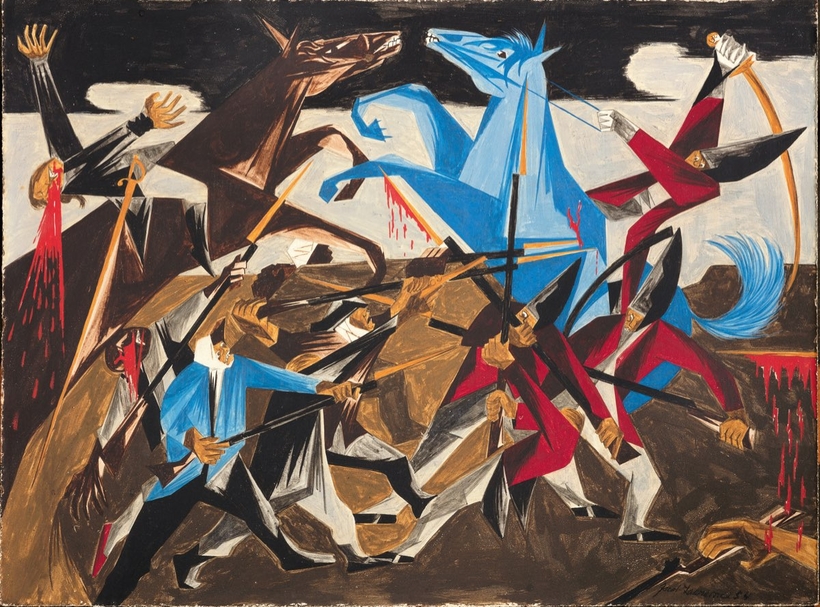“I paint the American scene,” said the artist Jacob Lawrence. That dramatic story encompassed the American Revolution, the building of the Erie Canal, the Civil War, Sacagawea, Paul Revere, Harriet Tubman, and John Brown. It also included the Great Migration north from the Jim Crow South, the lives of everyday New Yorkers, and Lawrence’s stint, during W.W. II, in the first fully racially integrated U.S. Coast Guard crew.
Long considered America’s pre-eminent Black artist, Lawrence, who lived from 1917 to 2000, painted history. And while he was neither color-blind nor apolitical, his art envisioned an America that acknowledged the shared histories of races. His paintings weave the strands of the country’s unsung heroes and marginalized events into a more inclusive, complex, and therefore truer national fabric. A visionary storyteller inspired by European modernism and the Harlem Renaissance, Lawrence was among the first artists to give voice and a visual narrative to the Black experience—human struggles he understood to be universal.
Jacob Lawrence’s paintings weave together the strands of the country’s unsung heroes and marginalized events.
Lawrence’s greatest work, “Struggle: From the History of the American People,” was left unfinished, with 60 egg-tempera panels planned but only 30 completed. Painted from 1954 to 1956, during the height of McCarthyism, the dawn of the civil-rights movement, and just as the Supreme Court had desegregated American public schools, “Struggle” tackles dramatic themes that include Washington’s crossing of the Delaware, the Boston Tea Party, and a failed North Carolina slave rebellion. Rekindling historical subjects, Lawrence ignited an awareness of continuing parallels in contemporary American life.

In many of the intense, claustrophobic vignettes re-created in the “Struggle” panels—each accompanied by a relevant quote, which is also its title—Lawrence’s dynamically angled and pointed shapes cross like broadswords. In panel No. 8, a fragmented, nearly abstract scene of 1777’s Battle of Bennington, blacks and whites fight side by side to defeat the British, as rearing horses and clashing soldiers hit head-on, like oncoming trains. In this and other panels, Lawrence’s whiplashing shards and planes of color pierce and interlock; every element and interaction, benevolent or violent, is a piece of the American puzzle.
Lawrence, a respected Black elder artist-statesman, was later criticized for not being vocal enough about the plight of the civil-rights movement. “Everything I have to say is in my paintings,” he replied. As for “Struggle,” Lawrence said he envisioned it as “a symbol showing man’s constant search for the perfect society in which to live.” Like Lawrence’s unfinished series, that search, in the American scene and elsewhere, is ongoing. But perhaps we should take the artist at his word. A sense of integration—in both subject and form—is what holds Lawrence’s beautiful “Struggle” together.

 Discover
Discover